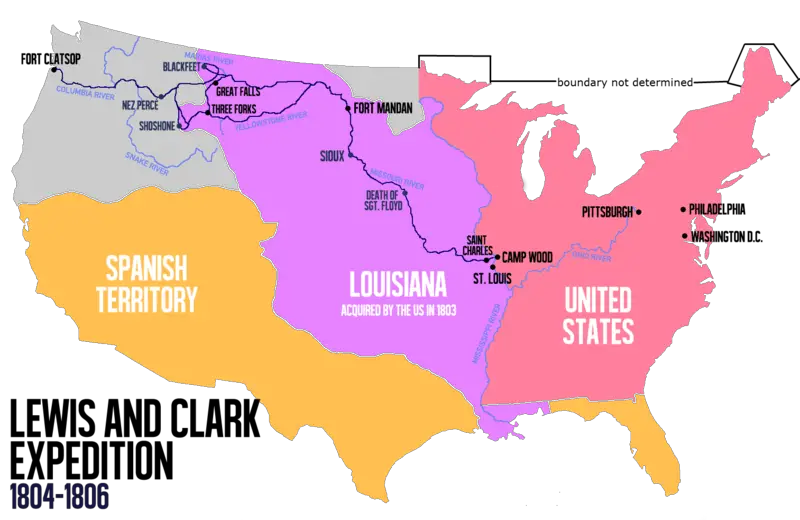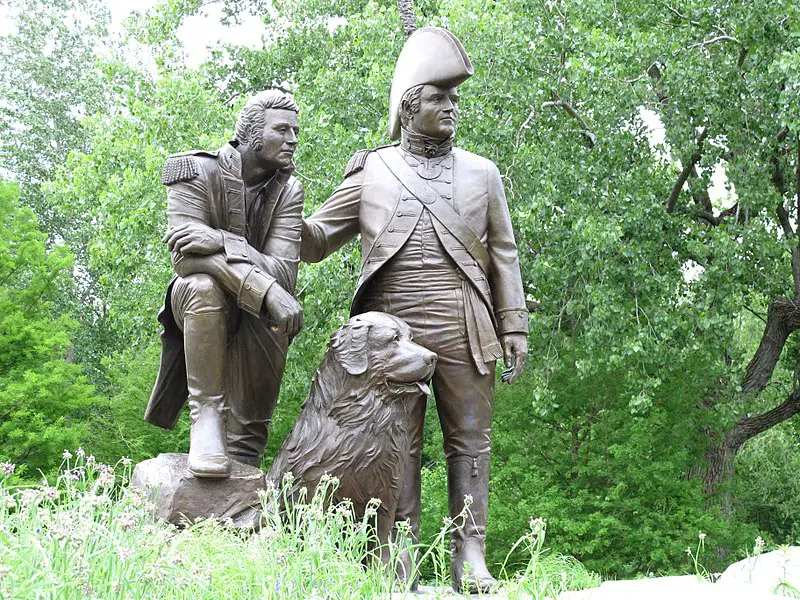Setting Out
Unlike today, all of the supplies and equipment that Lewis and Clark needed wasn’t conveniently located in one location. They had to travel long distances to collect everything that they needed.
They needed to get each of the items from a variety of sources and to do this. They had to take their individual groups of men so that they could bring the supplies to a final location.

- The team split up so that Lewis could get munitions at Harper’s Ferry. Lewis went by a 55 ft keelboat that they called “the barge” or simply “the boat” and traveled down the Ohio River, where he met up with Clark in Clarksville, Indiana. Lewis continued his journey on horseback to get more supplies, and Clark took the boat up the Mississippi River.
- They all met on May 14, 1804, in St. Louis, Missouri. The team included Lewis and Clark, along with over forty men to begin their expedition. They had created their own protocols for the first encounters of some of the Native Indian tribes that included bartering goods and giving the leader of the tribe an engraved coin. The coin had an engraved image of Thomas Jefferson on one side, and the other was a tomahawk and peace pipe with two hands clasped below and the inscription “Peace and Friendship.”
- The expedition knew that almost all of the land that they were going to explore was inhabited by Native Indians. Some of the Corps had previously encountered nearing fifty Native Indian tribes, and these included the Mandan, the Shoshone, the Blackfeet, the Minitari, the Sioux, and the Chinook. One of the messages that they gave each tribe as they met them was that the land that the Native Indians had lived on for thousands of years now belonged to the United States government. They included an offering of military protection in exchange for peaceful relations.
- As the expedition continued, they met some Native Indians that were familiar with “white men,” and they greeted them in a friendly way and were very agreeable to trade. Other Native Indians were not so friendly, as they were very wary. Those tribes were hostile but very rarely were they violent. The team had one larger boat and two smaller boats called “pirogues.” Their trip was against the river current, so they made use of long poles to push the boats as well as ropes that they could pull the boats from the men that were stationed on the banks.
- By August, the Lewis and Clark group had peaceful councils with the Native Indians of the Odo, near what is today Council Bluffs, Iowa, as well as the tribe of the Yankton Sioux at today’s Yankton, South Dakota. They continued and met the Teton Sioux, but this group was not as friendly. The Teton Sioux made attempts to stop the boats and made demands of toll payments. The military power of the Corps was stronger than the Teton Sioux, and so they left them alone.
- The team never forgot the instructions that they were given by President Thomas Jefferson:
- “The object of your mission is to explore the Missouri River, and such principal stream of it, as, by its course and communications with the waters of the Pacific Ocean, may offer the most direct and practicable water communication across this continent… Those who come after us will… fill up the canvas we begin.”
As the team continued, they knew that they were getting close to winter weather, which would be too horrific for them to remain outdoors without shelter.
They had to begin making plans to create some kind of fort so that they would be protected until the Spring.




